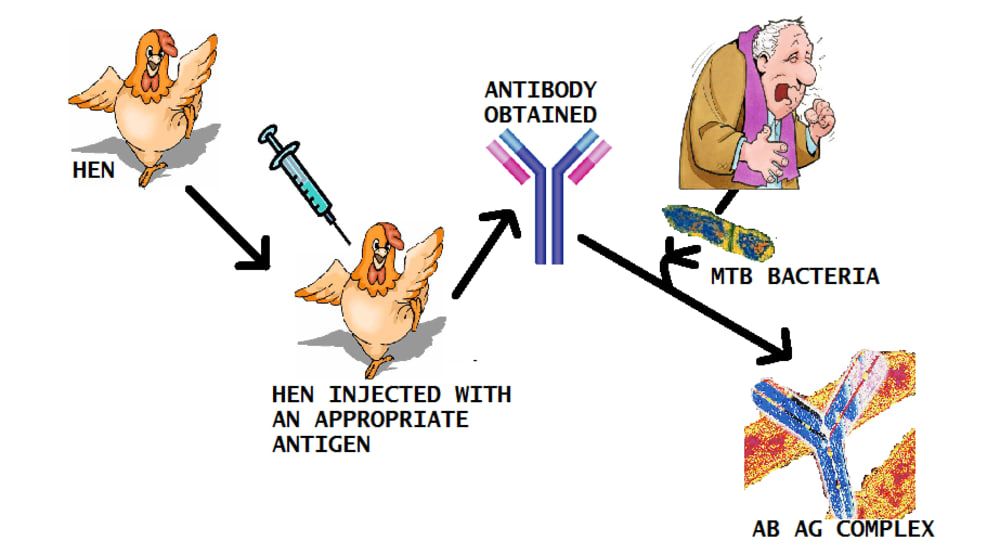Tuberculosis (TB) continues to remain as one of the most pressing health problems in India, and is considered to be the highest TB burden country in the world, accounting for one fifth of the global incidence - an estimated 1.96 million cases annually. Approximately 2.9 million people die out of tuberculosis every year worldwide; about one fifth of them in India alone. The disease is a major barrier to social and economic development. The modern diagnostic techniques, inspite of being specific to an extent, have some drawbacks: false positive results (Tuberculin Skin test and interferon gamma test), lack of specificity (X-rays, Smear Microscopy), time limitation (“gold standard” test). Moreover, some of these tests are expensive and this becomes a major hindrance for regular screening programmes and the average man neglects the early symptoms which ultimately leads to the spread of the disease.
In terms of specificity of diagnostic tests, antibodies are the key molecules and in addition a developing country must need a substantial, economically viable, and user friendly technique of detection. Thus one would eliminate the synthesis of antibodies.
The almost extreme properties of antibodies to recognize small specific structures on other molecules have made them an indispensable tool in laboratory in various applications such as research, diagnostic and therapy. The production of these antibodies requires generally the use of laboratory animals. one would eliminate the synthesis of antibodies Nowadays, most classical chosen mammals are rabbits and mice, The procedure causes misery to the animals the immunization itself and repeated bleeding or scarifying for spleen removal, which is mandatory for antibodies preparation.
In the aspect of Animal interests, the use of laying hens for antibody production represents a refinement and a reduction in animal use also that the painful and invasive blood sampling or scarifying are replaced by collecting eggs. It curtails a reduction in the number of animals .
Antibodies are transferred from hen to chick via the latent stage of the egg, and play an important role in immunological function for the relatively immune incompetent chick to resist various infectious diseases.
In this regard we propose a novel diagnostic kit for TB using a inexpensive means of antibody preparation, wherein the cost of synthesising can be brought down drastically by using IgY which are obtained from the egg of a hen when injected with a immunogen specific for TB bacteria. Further, using this principle we would look for antibody binding to TB bacteria that would result in a change in the spectrum of the bound bacteria, and this way we can actually quantify the results too, which will greatly help in analysing the rate of disease progression as well. Our idea is to market this detection technique as a kit which will be user friendly, cheap and give results quickly and with a high degree of specificity. Thus this method is apt for developing countries wherein a large population is burdened with the disease and routine screening is the key to disease cure.
Like this entry?
-
About the Entrant
- Name:Ramprasad Sethuraman
- Type of entry:teamTeam members:RAMPRASAD SETHURAMAN
ABHIJIT SANTHANAM
KRISHNAN NABOODIRI - Software used for this entry:NONE
- Patent status:pending

